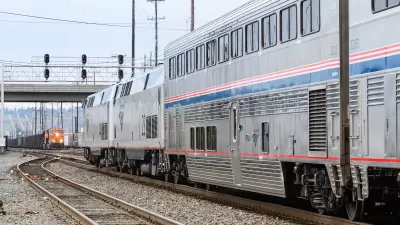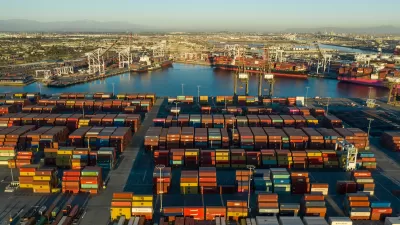In a time of plummeting oil prices, one might think rail would lose business to trucks, but the freight business is more detailed. In this interview with Burlington Northern Santa Fe CEO Mathew Rose, one gains an insight into freight rail's future.
"The railroad revival and prospects for continued success turn on oil prices. As those prices rose over the past several years, locomotives pulling long trains became a cheaper alternative than trucks pulling trailers. Inexpensive oil had inhibited rail expansion for a long period.
Trucks are thirstier for fuel than are locomotives, and near big cities trucks must negotiate increasingly congested roads. Oil has fallen from a high of $145 in July to less than $75. 'As long as it stays above $25, railroads should retain an edge,' Rose says.
Rose is also playing the environmental card. For the last several years, Burlington has supplied customers with data on how carbon-friendly their hauls will be if they use trains instead of trucks. A train carrying 100 tons for 1,000 miles produces 45% fewer greenhouse-gas emissions that contribute to climate change than long-haul trucks bearing the same load, according to Burlington."
"'I refer to it as a three-legged stool,' says Rose. 'Fuel, congestion on highways, and carbon. We like the long-term proposition of the railroad very much.'"
FULL STORY: Burlington Northern and the Revival of Railroads

Maui's Vacation Rental Debate Turns Ugly
Verbal attacks, misinformation campaigns and fistfights plague a high-stakes debate to convert thousands of vacation rentals into long-term housing.

Planetizen Federal Action Tracker
A weekly monitor of how Trump’s orders and actions are impacting planners and planning in America.

In Urban Planning, AI Prompting Could be the New Design Thinking
Creativity has long been key to great urban design. What if we see AI as our new creative partner?

King County Supportive Housing Program Offers Hope for Unhoused Residents
The county is taking a ‘Housing First’ approach that prioritizes getting people into housing, then offering wraparound supportive services.

Researchers Use AI to Get Clearer Picture of US Housing
Analysts are using artificial intelligence to supercharge their research by allowing them to comb through data faster. Though these AI tools can be error prone, they save time and housing researchers are optimistic about the future.

Making Shared Micromobility More Inclusive
Cities and shared mobility system operators can do more to include people with disabilities in planning and operations, per a new report.
Urban Design for Planners 1: Software Tools
This six-course series explores essential urban design concepts using open source software and equips planners with the tools they need to participate fully in the urban design process.
Planning for Universal Design
Learn the tools for implementing Universal Design in planning regulations.
planning NEXT
Appalachian Highlands Housing Partners
Mpact (founded as Rail~Volution)
City of Camden Redevelopment Agency
City of Astoria
City of Portland
City of Laramie





























